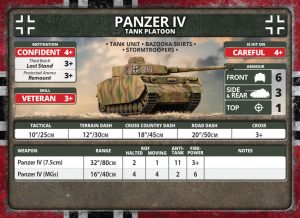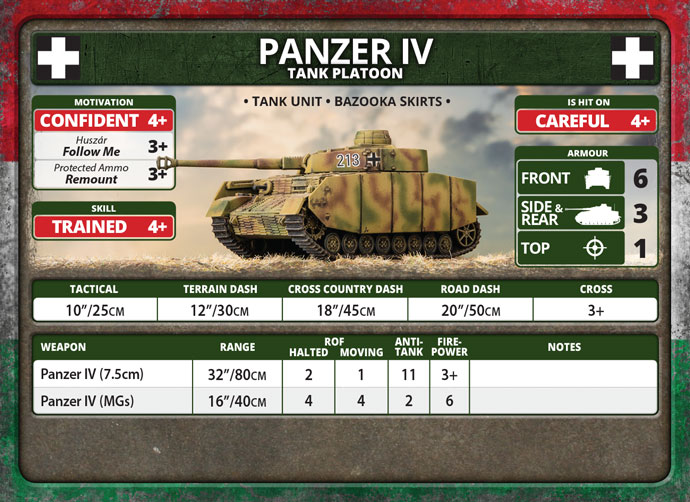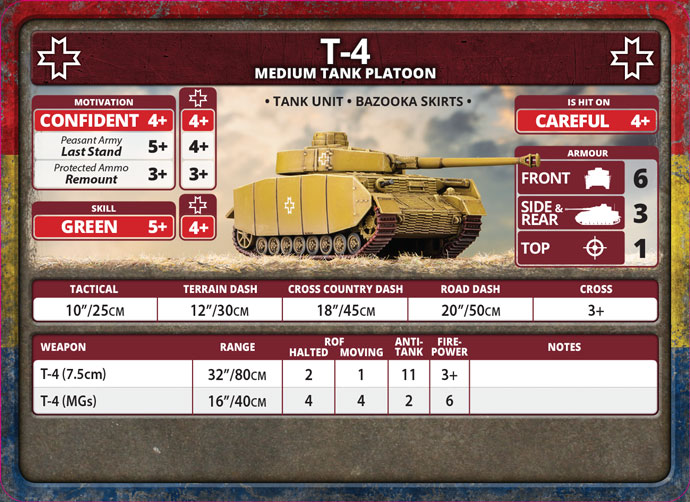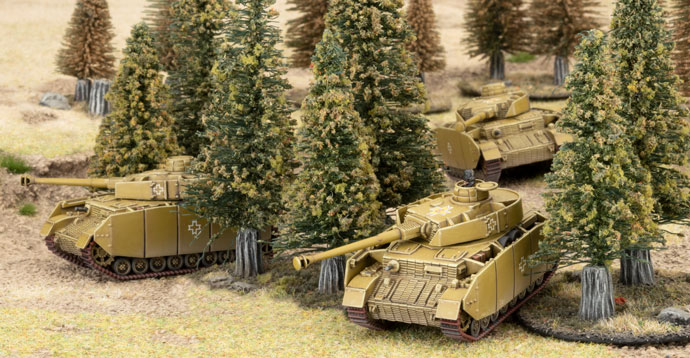 With Livio Tonazzo
With Livio Tonazzo
When one thinks of the most widespread German tank of the Second World War, everyone immediately thinks of the mighty Tigers or the beautiful lines of the Panther. In fact, as many of us know, the backbone of the German armoured forces was Panzer IV. Excellent medium tank, it was produced in various versions in 8-9,000 units, against just 1,350 for the Tiger or 6,000 for the Panther. The Panzer IV literally accompanied the Wehrmacht throughout the entire conflict, from 1939 until 1945, serving in all theatres from the frozen wastes of Russia to the scorched wastes of Africa, from French bocage to the ruins of Berlin.
The Panzer IV was, together with the Panzer III, also one of the most widespread tanks among the minor allies of the Axis. Hungarians, Romanians and Finns and also Italians. Shortly before the armistice of September 8, 1943, the Divisione Corazzata M was finishing their training on their Panzer IVs.
A comparison between Panzer IV, T-34 and Sherman
Before getting to the heart of the article I would like to make a comparison between the main medium tanks of the Late War. A framework will undoubtedly be very useful. On the other hand, even if outclassed by more armoured or more powerful models, they are the backbone of the armoured forces!
The Panzer IV has a decent 6 front armour which makes it well protected against 45mm light guns, on average protected against 50-75mm medium guns but very lightly protected against high speed guns like the German Pak40, British 17pdr or the Soviet 100mm. Given the proliferation of anti-tanks weapons above 11 (something to expect in this period of Flames of War) the Panzer IV must be played with great caution by avoiding exposure without adequate shelter. These types of tanks are useful for taking advantage of the numerical superiority and combined with good Anti-tank and Firepower value can give excellent results, just don’t move them in the open field! They are somewhat protected against anti-tank 7 hits from armoured cars on the sides. Against guns with comparable anti-tank values you might even think of an assault, perhaps adequately prepared by a powerful suppression fire to make the target unit pinned down. The Top armour value is 1 so the Panzer is not really suited to the assault but can be used if there are enough tanks and counter decimated units.
The Panzer IV cannot properly be called a fast tank. It moves 10 “at Tactical, so nothing in particular, it is an average value. Many tanks in Late War are slow (being more armoured) so you can try to take advantage of the advantage. Terrain Dash’s value is 12 “therefore only slightly better than the Tactical. Better instead the Cross Country Dash which is equal to 18 “, enough to take advantage of some unguarded sectors of the battlefield. If by chance the opponent left a road unguarded, you could even move 20”. But don’t hope too much!
As previously mentioned, the armament is a strong point of the Panzer IV. The 75mm gun has an anti-tank value of 11 which makes it lethal for light and medium tanks and still useful for flanking heavy tanks which, having a maximum value of 8, can be heavily threatened. A Panzer IV on the side of an IS-2 is a pretty sight! The Panzer IV gun also has a considerable range, almost always higher than that of the other counterparts. It can actually hit a target 32 “away. If you successfully perform a Blitz Order, you can practically fire 36” from the position where you started your turn. Many other guns fire at 28 “or even 32”, which means that very often you will have the so called “first fire”. Sometimes it is crucial. The firepower value is also good, a classic 3+ like many other guns of that calibre.
Panzer IV also has two special rules, one of which is very important in terms of play. One of these is Protected Ammo which allows the crew to more easily remount a bailed tank. The other is that the Panzer IV is equipped with Bazooka Skirts which help it resist shots fired by 5+ firepower weapons such as bazookas. Of course that doesn’t make the Panzer IV a good assault tank but it helps. Plus you’ll have to worry a lot less about the 20mm guns who managed to reach your flanks.
Overall the Panzer IV is a successful tank. Well armed and fairly armoured, it can find excellent uses on the battlefield of the Late War period. The cost in points, which varies according to Morale and Training, is reasonable and allows you to deploy a fair number of tanks.
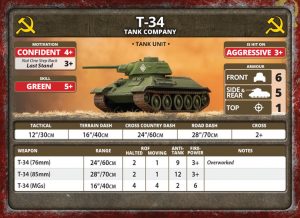
The best weapon of the T-34 when compared to the Panzer IV is speed. The Soviet tank has a Tactical value of 12 ” which makes it 20% faster than its German counterpart. The gap widens further when you consider the Dash. The Terrain Dash is 16″ for the Soviet tank against only 12 ” “than the German one, while the Cross-Country Dash values are 24” against only 16 “of the Panzer IV. The Road Dash is also very different, 28” against 20“. Even when it comes to traversing obstacles or terrain the Soviet tank is superior. The Cross value of 2+ is truly incredible while the 3+ of the Panzer IV give you some nasty surprises.
The weak point of the T-34 is undoubtedly the armament. The Soviet 75mm gun has an anti-tank of 9, well 2 points lower than the German 75mm. This gives the Panzer IV a great advantage that at short range it can match the enemy antitank with a meagre 3+ and overtake it with a 4+. Range is also an important factor. 24 “for the Soviet gun against 32” for the German one. Note that even though the T-34 is upgraded to the T-34/85, the Panzer IV maintains a higher range, retaining the advantage. Firepower and mg shots are identical, no difference here!
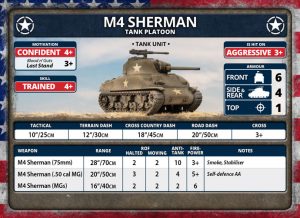
The Panzer IV of the Royal Hungarian Army
The Hungarians received their first twelve Panzer IV H tanks in May 1944 when the 2nd Armoured Division got them as replacements from the Germans while fighting in Galicia.
The training perfectly reflects the historical situation. Despite they are still Hit on 4+, the Hungarian crews are less trained than their German comrades, they are Trained instead of Veterans and therefore pass the skill tests with a result of 4+. This makes them slightly more difficult to play using Blitz and Shoot & Scott. They are less expensive than the German ones, they come with a discount of around 12%. Also Unlike the Germans, the Hungarians do not have the possibility to use two orders in one turn due to the lack of the Stormtroopers rule. They do not have the Third Reich rule which guarantees the Germans a Last Stand of 3+. However, they retain a decent value of 4+ (Confident) which makes them fairly tenacious fighters. Descended from Magyar horsemen, Hungarian has a strong cavalry tradition. The Huszar rule grants them a better value to pass the Follow Me rule test! This helps a lot with wraparound manoeuvres, especially for a tank we have seen is not quite as fast as we have seen previously.
The Panzer IV formation consists of a compulsory HQ consisting of two tanks and a Panzer IV platoon. The Panzer IV platoon consists of 3 to 5 tanks. Personally, I always recommend deploying at least 4 tanks but 5 would be better. Certainly the investment in points is more considerable but the tactical use of a large platoon has more impact on the battle. You can lose 1-2 tanks and still be a threat. The third compulsory slot can be made up of another Panzer IV platoon or a Panzer III platoon. The Panzer III are much less expensive but with a less effective main gun. It only has an anti-tank rating of 9 and a Firepower of 4+, which is not really effective at this time. Personally it is not a choice that I recommend that much, also because the platoon can only be composed of 3 or 4 tanks, not 5. Moving on to the non-compulsory slots, one slot is the same as the latter just described (Panzer IV or Panzer III). Another instead allows you to choose between Panzer IV, Panzer III, Panther or Tiger. Yes, you heard right! The Hungarians can field their own heavies (But we’ll talk about it in another article). This choice is very interesting because it allows you to have tanks in the formation that have a big impact on the game. With an anti-tank value of 14 they can easily pierce almost any enemy tank while their armour of 9 protects them from most enemy hits but the best thing is to have them in formation without being too limited on the number of tanks played: it’s the Panzer IVs that make the crowd! Personally, however, I recommend choosing the Tigers because they compensate for the partial inability of the Panzer IVs to attack infantry equipped with anti-tank weapons.
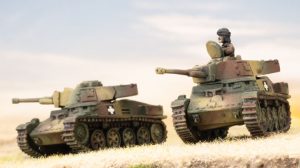
The Hungarian Panzer IV formation is a decidedly numerous and complete formation being able to include light, medium and heavy tanks in addition to anti-aircraft support. Only an infantry platoon is missing, but that shouldn’t be a problem since you can take it for support.
The Panzer IV of the Royal Romanian Army
Romania began receiving the first Panzer IVs (renamed T-4) in mid-1943. Some were new, others were decommissioned tanks from the German armoured divisions. The T-4s received baptism of fire in early 1944 but went on to form the 1st Romanian Armoured Division only in August.
Romanian T-4 are Hit on 4+ like German or Hungarian ones. All things considered, the Romanian soldiers have also been at war since 1941 and have had the opportunity to learn how to move properly on the battlefield. However, the training and morale are on the whole bad enough to represent the unfamiliarity of the Romanian crews with the new tanks and the negative trend of the war against the Soviet Union. Much like the Italians of the Mid War, the training and motivation of the Romanian army is somewhat variable. The T-4s pass their Skill tests with a score of 5+ unless they have been lucky enough to roll 5+ for the Peasant Army roll in which case they have 4+ skill, which is not exactly a great value. The Last Stand also needs a roll of 5+, which can be improved to 4+. The normal Morale value still 4+, which combined with the Protected Ammo gives it a good Remount value. Failing the Remount rolls means the platoon could easily miss the Last Stand roll. The poor training and morale however result in a major reduction in point cost. The T-4 is 25% less expensive than a German Panzer IV and this allows you to play a lot of tanks, field them in large numbers!
The T-4 formation is compulsorily composed of one T-4 Medium Tank Company HQ and two platoons of T-4’s. The HQ platoon is a bit of a highlight of the list. In fact it can be composed of 1 to 3 tanks. That’s right, you can have a T-4 Medium Tank Company HQ consisting of 3 tanks which is the number of tanks that the opposing platoons generally have! This has at least two advantages. First is that the Company HQ is very resilient. Unlike the other platoons, this particular one is not forced to roll for the Last Stand if it does not have at least two active tanks. Keeping a T-4 company in the field shouldn’t be too difficult. Secondly thanks to the 3 tanks in the T-4 Medium Tank Company HQ you will be able to assault with 6 tanks at once because the Company HQ can join an assault platoon forming an armoured mass. I would always recommend getting all three tanks for the HQ platoon.
The core platoon on this list is the T-4 Medium Tank Platoon which consists of 3 tanks. There are no other options, just 3 tanks. Not one more, not one less. Two of these platoons are compulsory while another is optional. In another non compulsory slot, you can choose between another T-4 Medium Tank Platoon and a TA Assault Gun Platoon. This platoon consists of three StuGs (7.5cm). The German assault cannon has a two point armour value higher than the T-4, but is not equipped with a turret as well as being much worse in assault while also being slightly more expensive, I personally prefer not to include it in the T-4 formation. An additional optional slot consists of an option between T-4, R-2 and R-35. These light tanks are very cheap but are lightly armoured and lightly armed. The last slot is what the platoon I like most about the Romanian army: the Armoured Rifle Platoon. I love the Sd Kfz Half-track and the fact I can play it with a Romanian units is really beautiful and personally I consider them a must have. The platoon can be composed of 5, 7 or 9 teams and in addition you can add a team armed with Panzerschreck (in addition to upgrading an existing base with the Panzerfaust). Moving in an armoured transport offers infantry a lot of protection in addition to speed with he Sd Kfz half-track also adding a lot of machine-gun fire which is useful in both attack and defence.
The formation of T-4 is a large and fairly complete formation thanks to the possibility of including infantry. It does however lack anti-aircraft and scouts but you can’t have everything in life. You should be taking advantage of the number of tanks you can bring since Romanian T-4s can be really dangerous for many opposing lists.
The Panzer IV of the Finnish Army
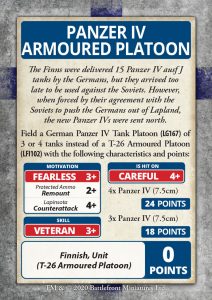
For the Finns the Panzer IV is a characterizing addition that can be very useful on the battlefield. Just remember to move them carefully and take advantage of their superior training as getting hit can be very painful.


